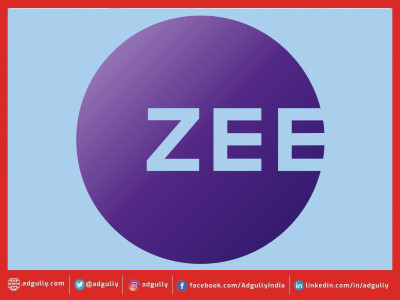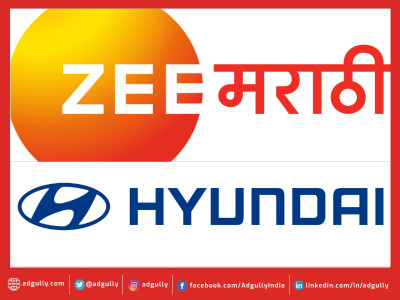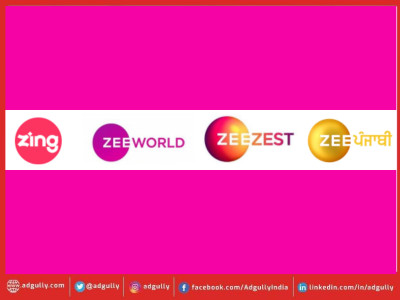The W-Suite | Be the organisation’s glue that holds visions together
With a rapidly evolving business and economic landscape there is a dire requirement of fresh thinking, new skill sets, greater flexibility & adaptability, more collaboration as well as the ability to think on one’s feet.
Diversity in the workforce has become a necessity today, and more so in the leadership positions. It can’t be denied that women bring a high level of creativity and empathy while solving problems and handling crises. Women leaders bring to the table a different level of dexterity.
AdGully’s ‘The W-Suite’ series features interactions with influential women leaders in India, who share some deep insights on what being a woman leader means in India’s business landscape, the mantras to succeed, achieving work-life balance, pay parity and much more.
Prathyusha Agarwal is the Chief Marketing Officer of Zee Entertainment Enterprises Limited (ZEEL). Prior to that, she was Head of Marketing at Tata UniStore Ltd. Agarwal, who had worked with Star India as Vice-President, Brand Strategy, has got an experience of 15 years in the field of media and marketing.
An MBA from IIM-Ahmedabad, Agarwal started her career with Hindustan Unilever as Area Sales Manager, Personal Products, in 2002. She spent four years at HUL in different capacities – Brand Manager, Pepsodent, and Regional Brand Manager and Regional Brand Manager, Sunsilk.
After moving from HUL, she worked as Senior Vice-President at Market Gate Consulting; Vice-President, Brand Strategy for Star India, Founder Director, all OK Tech Support, and Consultant, Brand Learning. She has also worked as Vice-President, Marketing and Analytics at HDFC Life.
What defines a woman leader in today’s ecosystem?
I have never seen it as woman leader, I have always seen it as just 'leaders'. It doesn’t matter whether you are male or female, gender doesn’t matter. I think in today’s ecosystem, if you are truly connected with the viewer and you are able to influence people which is really critical, maybe in that sense, it is the influencing skills and kind of bringing people together, that possibly is something that works better for a woman leader. I think if you are a good leader, it works in any ecosystem.
Why do you think a smaller percentage of women than men reach the top of their professions?
What we call the 'internet digital power lamps'– the click through rate is going down. The drop off that happens at every click, every ceiling being broken. I think the drop offs are huge. I remember when I was in HUL, the number of women were there was more than the number of men. But I think as you progress higher, there are three things that come in the way:
- The first thing is that you don’t have a wife managing home, you are the wife. So it takes immense amount of self-discipline and organising skills to run two enterprises paralelly.
- The second thing is that we have got to lean in. We question ourselves a lot, which we should not.
- And thirdly, where are the role models? In my office, I have a large number of ladies working and I am thankful that there are many youngsters who have them as their role models. It’s up to us to create role models for this generation so that more and more women leaders can come out.
So why the numbers are less is not really my concern here. My concern is how to make it happen?
Do you think women leaders are still scrutinised as much for style as for substance?
I really don’t know how to answer this question. Substance cuts through everything. I think style is hygiene these days. Style goes hand in hand with substance and it’s not just for women. I think there is a certain amount of style that is required for creating charisma and that works both ways.
Do you think the leadership effectiveness of women is higher than men? Why?
I don’t see it as men v/s women issue, like I said before. There are some effective leaders. There are different leadership styles. I see it as a leader’s style being effective or not. It’s not about women’s effectiveness. I can quote 10 examples of truly effective women and at the same time I can quote names of 10 men who have different leadership styles.
Women leaders in the 80’s and 90’s and women leaders today - what are the key differences? And what are the things that haven’t changed much?
I think somewhere they carried across. I really respect those women. I really look up to them as role models. They carried the cross of being a perfect homemaker. When I think of my mother, she used to come back at home at 4, used to cook food for us, used to go to office in the morning and in the evening she was there to do the homework with us and I really wonder how she did that. Those 80s-90s women sacrificed a lot, which is why we have so many more women in leadership doing what they are doing today. Today, I don’t think women leaders are looking at bearing the cross; they are just doing their jobs. They don’t look up to themselves as ‘a woman leader’, but their motive is just to do great work which cuts through.
How do you maintain a balance between career goals and family responsibilities? How frequently do you have to sacrifice one for the other?
If you are managing multiple projects, you have to make a schedule. I don’t think it to be a compromise. Actually you should be hugely disciplined; I and my husband map out travel schedules. When you are running two projects at the same time, you have to plan them. I do a similar thing with my personal life. So, there is no compromise. It’s just about planning things out so that one doesn’t overlap on the other.
Do you think pay parity exists in our corporates today across levels? What about pay parity at the leadership levels?
I don’t have too much privilege to the data, I would have to base it on whatever the industrial reports are. They claim that there is a difference. I think that it is also changing, because leaders today value talent and they are ready to pay for that talent. It doesn’t matter whether it is a man or a woman. I think what I have seen as a leader is – when a female member of my team negotiates, it’s hugely different from that of a male member and that goes up the ladder, I guess. Because the female members of a team do not ask for a prize while the male members always demand it. When they get recruited from the campus, there is complete parity, but I think when they perform better they do not ask for their due. And I think it’s an inspiration. No one should demand.
What would be your advice to women aiming for the C-suite?
Don’t think whether you will be able to manage or you are fit to be there. If you have delivered and you are good at your job, then the C-suite is just another corner. Be passionate about your job, C-suite will happen.
What, according to you, are the 3 important lessons new women leaders need to learn?
Firstly, being empathetic and listening to the viewers is very critical. HUL people have always taught me from the very first day I entered and that is something which I believe to be the golden principle.
Secondly, it is a data-analytics driven world. It’s very easy to get lost while playing around it. Data works beautifully when you are dismantling a problem. It doesn’t help you in putting together a solution. That’s where you need to use your expertise, your intuition, your problem solving ability that data doesn’t give you. It would really lead you to use your brain, which is the best tool to put up a solution together.
The third and the most critical one is the 'People'. Getting people energised is important. At home we energise our children, our family – we are like glue. Today’s millennials, who come looking for work can get disconnected very quickly. So, I think being an organisation’s glue that holds visions together and people together is another policy which is super critical.
















Share
Facebook
YouTube
Tweet
Twitter
LinkedIn